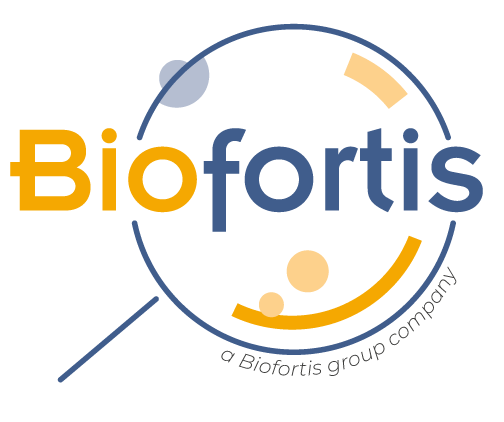For April’s Autism Awareness month, we wanted to return to the role of our gut bacteria in this neurodevelopmental disorder.
Autism is not a psychiatric/psychological disease. It is a pervasive neurodevelopmental disorder characterized by a dyad of impairing signs from an early developmental period (likely from birth): “persistent deficits in social communication and social interaction across multiple contexts” and “restricted, repetitive patterns of behavior, interests, or activities”. This dyad is often associated with various sensory issues, digestive dysfunctions, and sometimes an intellectual deficit. This syndrome is referred to as the autism “spectrum” because affected individuals show various levels of severity for each clinical sign. In developed countries, the autism spectrum disorder (ASD) is thought to affect 1 out of 60 births (with a 3-4 to 1 male to female ratio).
Gut-brain axis & neurodevelopment
Germ-free mice have shown the importance of the microbiota in neurodevelopment. Indeed, these germ-free mice show an abnormal development of almost all components of their central nervous system. Furthermore, “critical window fluidity” is one of the 5 hallmarks of the gut microbiota-brain axis, meaning that periods of neurodevelopment during pregnancy and life seem particularly sensitive to the influence of gut bacteria, especially the prenatal, perinatal periods, but also adolescence.
Microbiota & autism
Some predisposing genetic factors have been investigated in ASD, but significant variations among studies reflect the phenotypical heterogeneity of the disorder. It is likely that a significant portion of the pathogenesis is associated with environmental factors during the critical developmental windows mentioned above. In particular, maternal inflammation during pregnancy (e.g. a viral infection) is a well-established risk factor for neurological disorders in the offspring, as shown by the development of some autism models in laboratory rodents.
With depression, autism is the pathology that has received the most interest in investigating the role of the gut microbiota in neurology. This makes sense since the gut microbiota plays a key role in both neurology and immunity/inflammation, but also because GI symptoms are very common in autism (e.g. constipation) and that their intensity often correlates with the severity of the behavioral symptoms.
Studies on gut bacteria in autistic individuals and rodent models of autism have consistently showed a dysbiosis, but without identifying any specific taxonomic signature. It is noteworthy to emphasize the fact that these results are only correlative, rather than causative to date. Some explain part of the heterogeneity of the results and the lack of causality insight with the too common shortcomings of these study designs: e.g. no information on dietary habits or medications, mostly observational studies, improperly powered and/or improperly controlled designs.
The origin of the altered gut microbiota in autism remains unknown. The often unusual dietary habits of autistic individuals could explain at least part of it, but we do not know when their gut dysbiosis even starts (from birth?). Some believe that a higher number of neurotoxin-producing bacteria that are overrepresented in autistic children (e.g. Clostridium), associated with their leakier digestive barrier, could cause, or at least exacerbate, certain autistic symptoms.
Presently, there are no early diagnostic tools and no universally effective treatments in autism. Thus, because of consistent gut dysbiosis in both ASD rodent models and autistic individuals, there has been a growing interest to:
1) use the gut microbiota as an early diagnostic biomarker of autism;
2) modulate the gut microbiota to management clinical manifestations (e.g. pre/pro-biotics, restriction diets, fecal transplant).
For instance, many parents of autistic children use an elimination diet (e.g. gluten-free, sugar-free). Some studies have looked at the effect of antibiotics in autistic clinical manifestations with mixed success, but never with any long lasting improvement after drug withdrawal. On the other hand, Kang DW et al showed that the transplant of the fecal microbiota (FMT) from neurotypical to autistic children significantly improved both GI and behavioral symptoms, and that these effects were often still present 2 years after treatment. However, for this paradigm shift linking gut bacteria and autism to lead to safe, effective, and robust tools in diagnosis and therapy, research will have to rely on multidisciplinary collaborations between experts from various fields (e.g. microbiology, neurology, artificial intelligence, medicine) and from different work environments (e.g. academia, industry, biotech, governmental agencies, patients’ associations).
For more detail on this subject, check out Biofortis Mérieux NutriSciences’ latest scientific booklet that focuses on the role of the gut microbiota in neurological disorders, including autism.
https://www.un.org/en/events/autismday/
https://www.cdc.gov/ncbddd/autism/data.html
https://www.autismspeaks.org/dsm-5-criteria
http://www.vaincrelautisme.org/content/l-autisme-en-chiffres-cles
– References –
Related scientific articles: Cao X et al 2013, Galland 2014, Fond G et al 2015, Lowry CA et al 2016, Kelly JR et al 2017, Heiss & Olofsson 2018, Xu M et al 2019, Forssberg 2019, Paysour MJ et am 2019, Warner BB 2019, Liu F et al 2019
– Dr Sidonie N. Lavergne, Research Partnership Manager, Biofortis Mérieux Nutrisciences –

